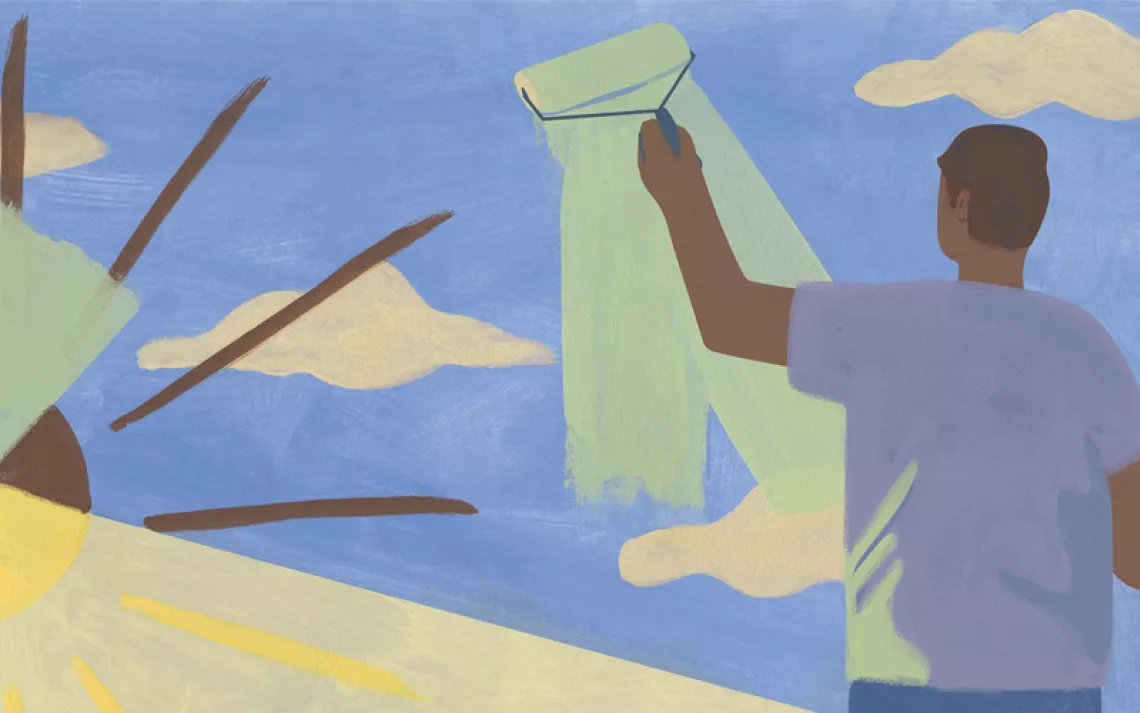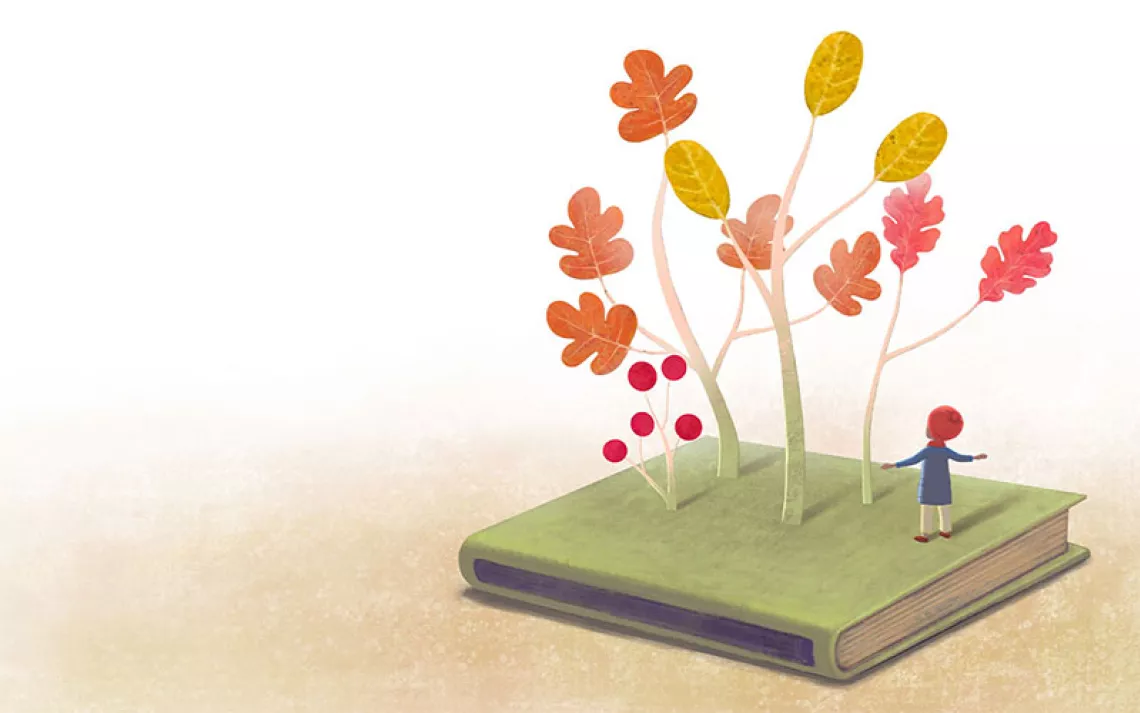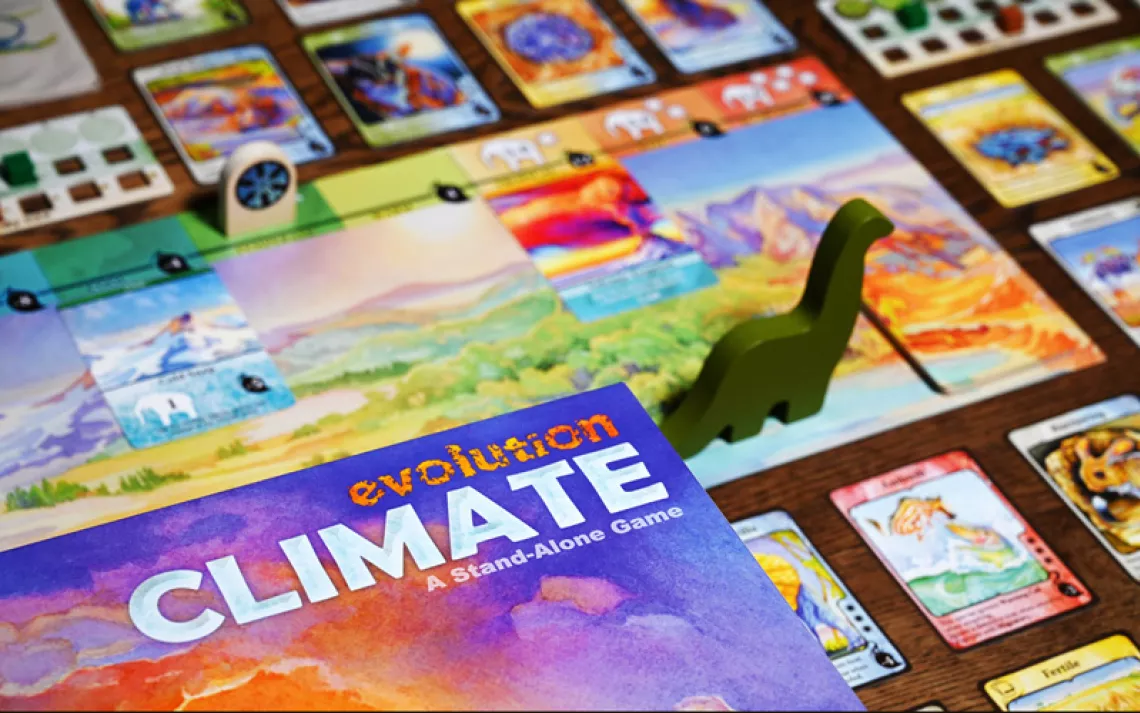What We Learn from Rereading Winnie-the-Pooh

Photos courtesy of Kathryn Aalto
Do you remember the Hundred Acre Wood? It’s one of the most iconic settings in children’s literature, the magical place where Christopher Robin and his famous chums—Winnie-the-Pooh, Piglet, Owl, Rabbit, Eeyore, Tigger, Kanga, and Roo—have their adventures in Winnie-the-Pooh (1926) and The House at Pooh Corner (1928). Ninety years after the first Pooh book was published, the original stories by A. A. Milne and illustrator E. H. Shepard still sweep us up in a wave of nostalgia. They take us back to a wonder-filled land where a child and his friends climb trees, play games in streams, and wander from one tree house to another.
The Pooh books were a phenomenal success when they were first published, and during the last 90 years they have sold more than 20 million copies. Their sustained popularity is well deserved. If anything, the Pooh stories have taken on greater meaning today: They illustrate how important it is for children to have the time and space for imaginative play outdoors.
Milne’s stories seem the stuff of childhood fantasy, but the Hundred Acre Wood was based on an actual place—England’s Ashdown Forest. That’s where A. A. and Daphne Milne moved in 1925 to give their real son, who was named Christopher Robin, a childhood rich in outdoor experiences. Located 40 miles south of London, the 6,400 acres of open heathland and mature woodlands still look much as E. H. Shepard drew them: trails and streams winding like satin ribbons through bracken, yellow gorse, and purple heather where rare flowers grow and endangered birds, butterflies, and damselflies breed. Christopher Robin's real and imagined "Expotitions" in that landscape became the adventures for millions of children across generations.
 Poohsticks Bridge.
Poohsticks Bridge.
Milne's iconic stories are about far more than a boy wandering the landscape without adults. The stories were inspired by Milne's own golden memories of his childhood in the natural world. Born in 1882, he had such a memorable childhood that two-thirds of his autobiography, It's Too Late Now, is devoted to his earliest years.
Milne's parents gave their three sons a wonderful gift: a childhood of aimless wandering. Even as toddlers, Milne said, "we were allowed to go [for] walks by ourselves anywhere, in London or in the country, but we kept to the rules and [Papa] knew he could trust us." His gentle and intuitive father, also his school headmaster, would tell him, "Keep out of doors as much as you can and see all you can of nature: She has the most wonderful exhibition. Always open and always free."
Expeditions and explorations defined the Milne sons’ boyhoods. With long blond hair and piercing blue eyes, the boys looked like twins and were inseparable conspirators, adventurers, and collectors. Together, they gathered butterflies and bird eggs and wielded geologist hammers on the rural Finchley Road (now a major thoroughfare in London) in search of captivating rocks and minerals. At dawn, they crept out of the house without waking their parents and drove fiery iron hoops through the sleeping streets of Victorian London. The boys were intrepid explorers, and Milne's first published writing in his school newspaper as an eight-year-old was an account of an 18-mile walk in Ashdown Forest, the landscape that he would later immortalize.
 Eeyore's House.
Eeyore's House.
When he moved to Cotchford Farm near Ashdown Forest, Milne gave his own son the freedom his father offered him. A key feature at the entrance to Cotchford Farm was an ancient walnut tree with a great gash down in its trunk. For five-year-old Christopher Robin, it was magical. Small enclosed spaces appeal to children, as the world around them can seem very big. Tree hollows and tree houses—where most of the animals in the Pooh stories live—provide retreats away from the watchful eyes of parents and have the same appeal as tents, teepees, and forts. That very same tree is where the grown Christopher Milne, in his autobiography, would later say that Winnie-the-Pooh originated, with a writerly father watching on in delight.
Owl's House, the Heffalump Trap, Rabbit's House, the Enchanted Place, Eeyore's House, the Bee Tree, Poohsticks Bridge—all of those storybook places had origins outdoors in the real world where A. A. Milne and his son walked.
As we approach the 90th anniversary of Winnie-the-Pooh, we continue to find value in these seemingly simple classics. In an era in which parents worry about what journalist Richard Louv has called “nature deficit disorder,” the stories can be read as field guides for the free-range child.
We value reading books, but learning to read landscapes—the names of flowers, the rhythms of seasons, why and how the planet turns—is equally vital. Time outdoors and away from the digital landscapes of iPads, smartphones, and computers lets children connect with places ungoverned by grownups. Free play develops their minds and expands their hearts. Whether a child is playing in an abandoned urban lot or in the country, unscheduled stretches outside allow a child to find their own Hundred Acre Wood in which to undertake adventures.
There’s a parable hidden in Milne’s delightful stories, and it’s more important than ever: For little ones, Doing Nothing is a real important Something.
 The Magazine of The Sierra Club
The Magazine of The Sierra Club



